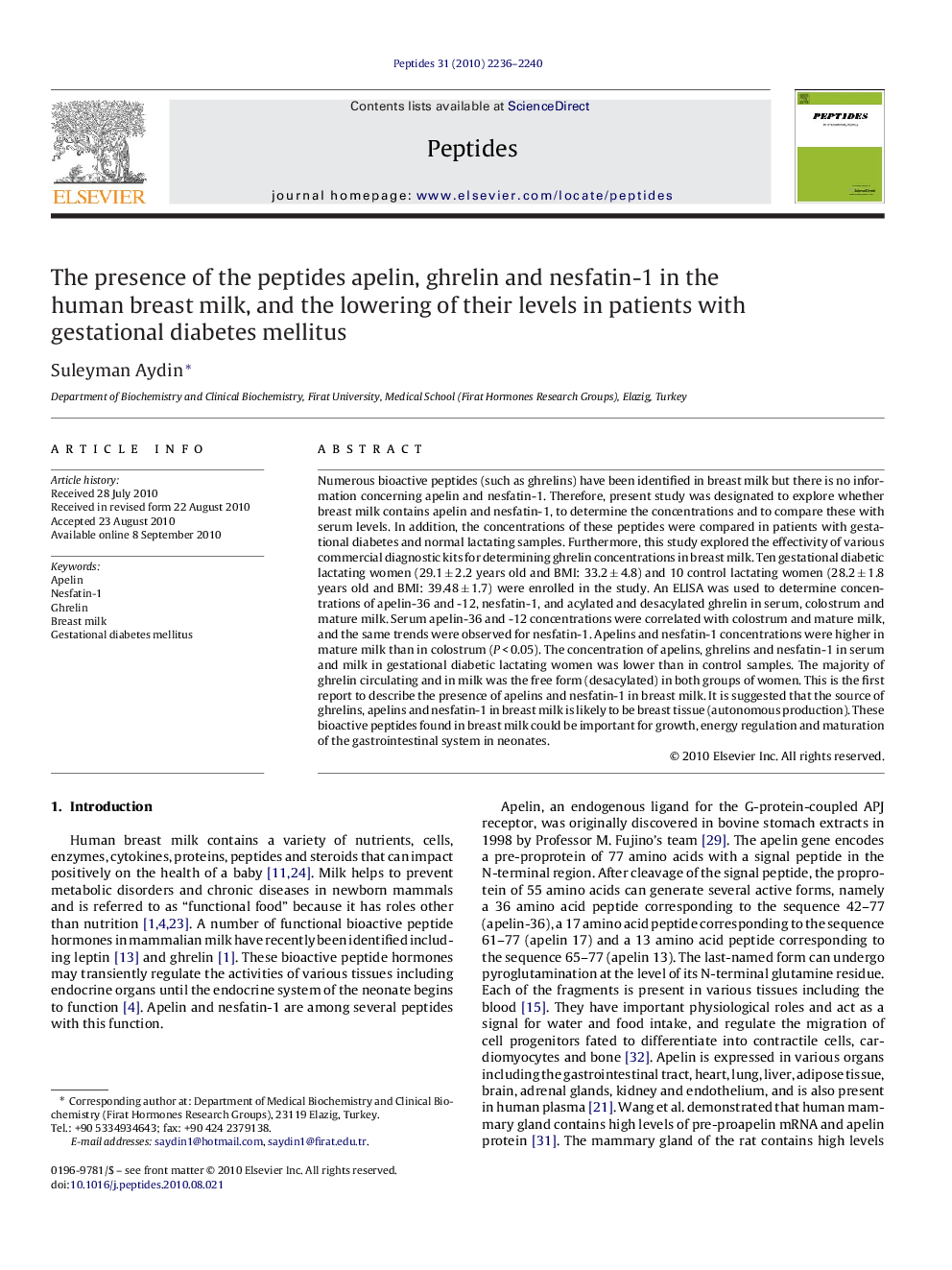| Article ID | Journal | Published Year | Pages | File Type |
|---|---|---|---|---|
| 2006690 | Peptides | 2010 | 5 Pages |
Numerous bioactive peptides (such as ghrelins) have been identified in breast milk but there is no information concerning apelin and nesfatin-1. Therefore, present study was designated to explore whether breast milk contains apelin and nesfatin-1, to determine the concentrations and to compare these with serum levels. In addition, the concentrations of these peptides were compared in patients with gestational diabetes and normal lactating samples. Furthermore, this study explored the effectivity of various commercial diagnostic kits for determining ghrelin concentrations in breast milk. Ten gestational diabetic lactating women (29.1 ± 2.2 years old and BMI: 33.2 ± 4.8) and 10 control lactating women (28.2 ± 1.8 years old and BMI: 39.48 ± 1.7) were enrolled in the study. An ELISA was used to determine concentrations of apelin-36 and -12, nesfatin-1, and acylated and desacylated ghrelin in serum, colostrum and mature milk. Serum apelin-36 and -12 concentrations were correlated with colostrum and mature milk, and the same trends were observed for nesfatin-1. Apelins and nesfatin-1 concentrations were higher in mature milk than in colostrum (P < 0.05). The concentration of apelins, ghrelins and nesfatin-1 in serum and milk in gestational diabetic lactating women was lower than in control samples. The majority of ghrelin circulating and in milk was the free form (desacylated) in both groups of women. This is the first report to describe the presence of apelins and nesfatin-1 in breast milk. It is suggested that the source of ghrelins, apelins and nesfatin-1 in breast milk is likely to be breast tissue (autonomous production). These bioactive peptides found in breast milk could be important for growth, energy regulation and maturation of the gastrointestinal system in neonates.
Research highlights▶ The peptides apelin, ghrelin and nesfatin-1 are present in the human breast milk. ▶ Their concentration is lowered by gestational diabetes mellitus. ▶ These peptides could be important for growth, energy regulation and maturation of the gastrointestinal system in neonates.
